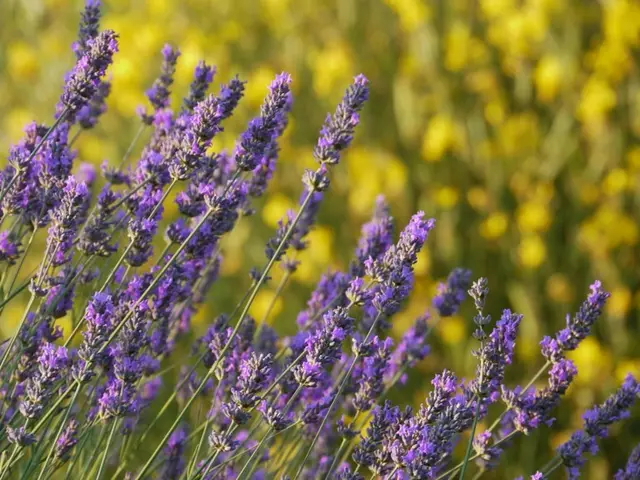Best Vegetables to Ferment for the Fall Harvest
Embrace the bounty of autumn with lacto-fermentation! This simple, safe home preservation method turns your harvest into mouth-watering, probiotic-rich treats. And the best part? No risk of botulism!
Lacto-fermentation, or salt-based fermentation, is easy as pie. All you need is the right gear and a foolproof recipe. Unlike canning, there's no risk of food poisoning – the acidity naturally created in the jars keeps things safe and sound.
Fermented veggies are packed with health benefits too. They're teeming with probiotics, more digestible than raw veggies, and their nutrients are preserved (and often even enhanced) by friendly bacteria. Plus, they taste amazing! Cabbage, carrots, beets, and more develop fascinating flavors and textures that'll leave you hooked.
So, what's the secret to lacto-fermentation? Chop your veggies, toss in some salt, pack 'em in a jar, and let 'em sit! Got questions? Check out our comprehensive guide for the deets. Here are some top-notch options to get you started:
Cabbage
Cabbage is a fermentation champion! It's cheap, easy to find, delish, and practically failsafe in the fermentation department. With just a bit of salt and time, it transforms into a crunchy, juicy sauerkraut that's perfect for any occasion. White and red cabbages are our faves for their unique textures and flavors. Feeling bold? Experiment with juniper berries, bay leaves, caraway, fennel, dill, curry, onions, apples, carrots, garlic, or chili peppers. Trust us, the combinations are endless! And don't forget to check out our sauerkraut kit for a fun, hassle-free fermentation experience.
Carrots
Carrots shine when fermented on their own or in a supporting role. Try them shredded like sauerkraut, sliced for sandwiches, or in stick form as a crunchy crudité. Want to kick things up a notch? Add a slice of orange for a sweet twist, curry spice blend for an Indian-inspired condiment, or ginger and garlic for an Asian flair.
Beets
Beets are fantastic for fermentation! Eastern European countries love fermented beets, and it's no wonder – they're colorful, tasty, and teeming with goodness. All beets can be fermented, so don't limit yourself to red ones. Pink, yellow, white, and chioggia will make your jars pop with color and flavor. Be aware that beets contain a lot of sugar, which can impact fermentation. Combine them with other veggies like turnips, carrots, or cabbage to maintain the perfect balance.
Tomatoes
Fall tomatoes can be a challenge, but lacto-fermentation makes it a breeze! While the results might not be the same as canned tomatoes, we love using cherry tomatoes for a burst of flavor. If you're craving canned tomatoes' texture, add calcium chloride to the mix. Fermented tomatoes are awesome in salsa, tomato sauce, or bruschetta. Trust us – you'll never go back to canned again!
Cauliflower
Cauliflower ferments beautifully when paired with other veggies like carrots, peppers, celery, onions, or even beetroot. It's also delicious fermented on its own. For a wow factor, ferment purple, yellow, or Romanesco cauliflower to liven up your meals.
Green Beans
Lacto-fermented green beans are a game changer! They retain their freshness and taste unlike canned beans. To keep them crunchy, add a small amount of calcium chloride. Once fermented, enjoy them like pickles, fry them in a little oil with nuts and herbs, or use them in cold salads and sandwiches.
Celery
Fermented celery is delicious after just one week! It can be fermented as sticks or chopped, and it's best fermented in brine. To keep celery crunchy, use calcium chloride and don't let it ferment for too long. Once fermented, it can be stored indefinitely in the fridge. Perfect for pasta salads, chicken sandwiches, or a fancy Bloody Mary!
Chili Peppers
Chili peppers can be fermented whole, sliced, pureed, alone, or with other veggies. They soften during fermentation, making them perfect for hot sauce. If you want to eat them in slices, add calcium chloride to the brine for crunchiness. Don't throw away the brine – it's fantastic in marinades and vinaigrettes!
Garlic
Garlic ferments wonderfully! Its spiciness mellows during fermentation, preserving a distinct flavor. Ferment garlic pureed or in brine, then use it in marinades, salad dressings, or as-is for a pickle-like snack.
Onions
If you love pickled onions, you'll love fermented onions! They have more subtle flavors and a less acidic taste compared to their pickled cousins. Red onions add a pop of color, while small pearl onions are great fermented whole in brine. They're delicious in vegetable mixes or lacto-fermented salsa.
How to Eat Fermented Autumn Vegetables?
Your fermented vegetables are ready to devour! Add them to sandwiches, burgers, pitas, abundance bowls, fried rice, soups, or serve them as a side dish. Check out our 44 Ideas for Eating Fermented Vegetables for endless inspiration! Enjoy your meal!
Got gear for your fermentation adventure? Check out our recommendations for containers and equipment to get started. Ready, set, ferment!
Ready to dive deeper into lacto-fermentation? Check out our comprehensive guide for all the details! Happy fermenting!
Lacto-fermentation can be extended to various types of food and drink, such as cooking different dishes with fermented ingredients. For instance, incorporating probiotic-rich cabbage into a health-and-wellness focused meal, or using fermented tomatoes in food-and-drink creations like salsa or bruschetta, can add a unique twist. Furthermore, the home-and-garden enthusiast might find joy in growing their own vegetables for fermentation, while the fitness-and-exercise conscious individual could reap the benefits of healthy-cooking methods like lacto-fermentation as part of a balanced lifestyle. With a wide range of options from carrots to chili peppers, the possibilities for culinary exploration are endless.








